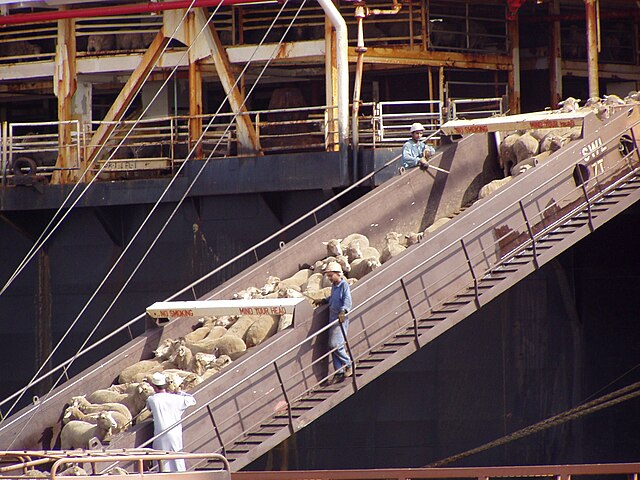Originally published September 18, 2024. A Free Trade Agreement (FTA) between Australia and the United Arab Emirates on September 17, 2024 heavily favors bilateral agricultural trade.
The new deal expels 99% in export tariffs and will save Australia some A$135 million ($91.57 million) in its initial year.
Agricultural goods will be best positioned for savings because eight of Australia’s key exports to the UAE are food-based. These include meat, milk, fish, natural honey, canola, lentils and chickpeas.
Trade Minister Don Farell remarked that Australia’s food produce exports “alone” will henceforth save A$50 million ($33.89 million) per year.
Similarly, the Australian Meat Industry Council said the deal will boost beef and lamb exports to the strategic Gulf market.
UAE’s Benefits
The UAE stands to gain from key animal products that are highly in demand in the various Emirates. One of these is beef, whose import total from Australia stood at 9,300 tonnes in the year ending September 2024.
Aussie mutton is also popular in the UAE, with yearly sheep meat imports at 17,600 tonnes up to September 2024.
In climate, the UAE could use its growing foreign sovereign wealth in Australia to increase renewable energy reserves.
Australia’s increasing interest in renewable resources could also provide the UAE an offshore green energy investment opportunity.
Mutual Benefits between Australia and the United Arab Emirates
Besides one-way benefits, Australia and the United Arab Emirates also stand to gain in inter-country investments. For instance, over 300 firms from Australia operate in the UAE, whose investments range from business to agriculture.
Mutual trade and investment between the two reached $9.9 billion in 2023, the highest for Australia in the Middle East.
In 2023, the two geographically distant economies also set aside a mutual trade kitty of $14 billion.
The UAE’s Minister of Foreign Trade Thani Al Zeyoudi captured the FTA’s magnitude on X, writing that it dawns “cooperation and opportunity.” And as the statistics below underline, some of these opportunities in trade are already underway.
Australia and the United Arab Emirates Agricultural Trade Statistics
Australia and the United Arab Emirates are big trading partners in oil, minerals, fertilizers, steel and agricultural goods. Canberra taps the huge processed food market within the UAE, especially meat and live animals whose total worth averages $2.6 billion. This is not when counting the UAE’s fruit and vegetable market, worth $4.8 billion. In its part, the UAE exploits the appetite for nitrate fertilizers in Australia’s lush agricultural sector. At $317 million, nitrogenous fertilizers were the Arab nation’s biggest export to Australia in 2022 while all exports hit $1.34 billion.
How much agricultural commodities does the UAE import per year?
The UAE ordered $24 billion in food, seafood and forestry goods in 2020 from around the world. This value represented 85% of all food the country consumes annually.
What portion of these imports come from Australia?
According to Australia’s Department of Agriculture, Water and the Environment (DAFF), the UAE imported $1.06 billion in agricultural commodities from Australia in 2021. This was around 0.045% of all agricultural imports worldwide by the UAE.
Which two agricultural products top trade between Australia and the United Arab Emirates?
Other than aluminum oxide at $847 million, Australia’s top 3 exports to the UAE in 2022 were agricultural. These included rapeseed at $676 million, followed by mutton at $169 million. As a whole, exports by Australia to the UAE including non-agricultural were worth $3.42 billion in 2022.
Is the UAE the only GCC country with an Australia FTA?
UAE became Australia’s first Middle East nation to sign an FTA in September 2024. The origin of the agreement goes back to March 2022 when the two nations initiated the Comprehensive Economic Partnership Agreement. 2024’s FTA is the 19th such free trade agreement for Australia.
